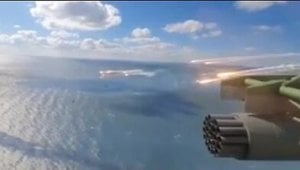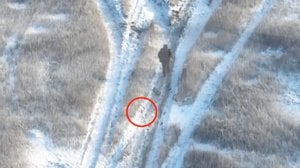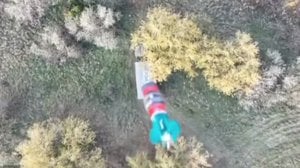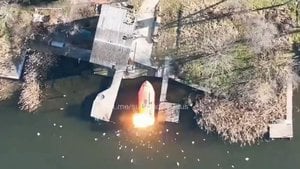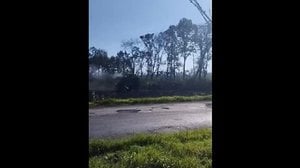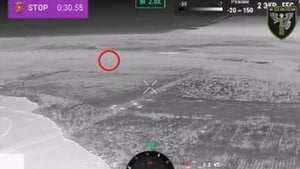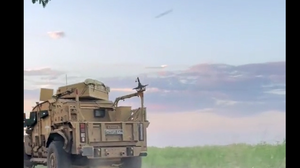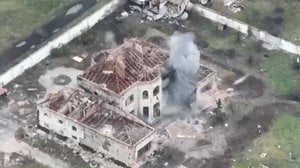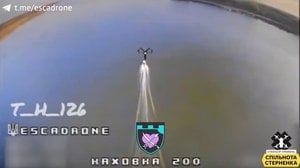
UA Marines Sink BMP During Amphibious Training
Published 11 months ago
Ukrainian Marines conduct amphibious training with BMP-1 infantry fighting vehicles (IFVs). The camera is mounted on one of the vehicles, and several others can be seen swimming the river ahead through a marked channel. One of the BMPs appears to founder, forcing the crew into the water to await rescue from the RHIB on standby as a safety boat.
On the front of the BMP the trim vane can be seen extending from the bow, a feature of many vehicles with amphibious capabilities. Armored fighting vehicles are often designed with sloping front glacis intended to enhance armor protection, but during swim operations this feature allows water flow over the vehicle and pushes the bow underwater. An extended trim vane acts as a plow, pushing water out of the way and preventing the vehicle from burying its nose under the surface. The BMP-1 was designed with this limited amphibious capability so that units could cross or ford water obstacles, such as lakes and rivers.
One of the core functions of the United States Marine Corps is conducting amphibious operations, and while the AAVP-77 is the primary vehicle for ship to shore movement, there are other platforms in the USMC inventory that boast an amphibious capability. The Light Armored Vehicle (LAV) family possesses a limited amphibious capability, and after extensive preparation can be rigged for swim operations. Once all of the drain plugs are tightened, hatch seals greased, and marine drive units tested, one can theoretically raise the trim vane, and splash into the water under calm conditions. In reality, these ideal circumstances rarely existed. Prior to the 2003 Iraq war, our unit trained for amphibious operations under the expectation that we might be asked to ford the Tigris or Euphrates River wile in contact with the enemy. During a training exercise in central California in late 2002, my unit attempted to swim our entire company across a lake only to discover that half the vehicles leaked too badly to survive the attempt. When we tried with the remaining watertight vehicles the next day, one sprang a leak while entering the lake and we almost lost it with the battalion commander and division commanding general watching. Suffice it to say, by the time we actually reached a river in need of a crossing, the Diyala River, our vehicles were so beat up that most of them never would have made it across.
With that in mind, it is interesting to see the Ukrainian army attempting to develop an amphibious force. There are countries that establish units of naval infantry and label them Marines, though those units have no real amphibious capability. I spent some time training Iraqi Marines, and they were really just maritime security forces, but the term “marine” brings with it a certain amount of street credit. The fact that Ukraine is establishing units with a legitimate amphibious capability, but as one can see in this video, amphibious operations are complex and the level of friction increases exponentially as soon as one introduces water into the equation. The fact that they are using the BMP-1 is also not encouraging given the age of the platform. Our LAVs were not the most reliable amphibious platform, and they entered service in the 1980s. The venerable AAVP-7 has been in service since the 1970s and a few years ago a serious mishap resulted in the death of several Marines and suspension of AAV operations across the Marine Corps. The BMP-1 is older still and as seen rough service for nearly six decades. It is not necessarily the platform that I would want to use to cross a river, but Ukraine has no other options available. As we say in the sailing world, sometimes the best boat is the one you have. I suppose the same can be said for amphibious IFVs.
About the Author
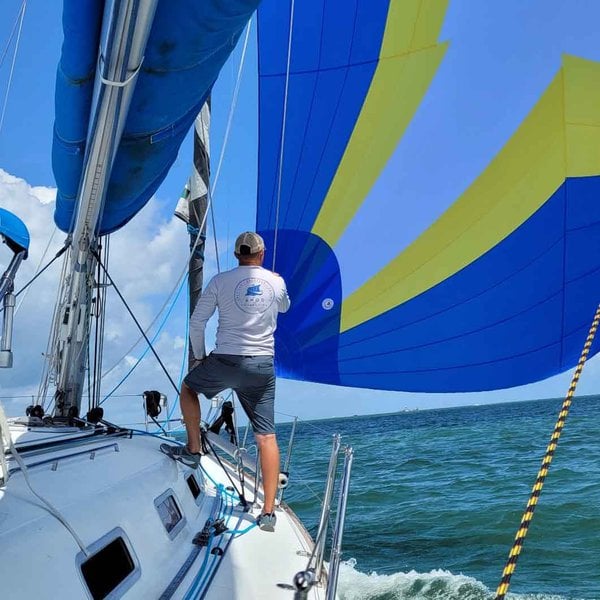
Cam
Cam served as an infantry officer in the Marine Corps, deploying to the Horn of Africa and participating in combat operations in Iraq. He currently works in the maritime industry and in the defense sector as an instructor of combined arms planning and operations. An avid sailor, Cam founded and directs Triumph Sailing, a nonprofit that supports veterans and first responders through adventure and fellowship on the water. Triumph Sailing just completed its big yearly event, an offshore race in the Gulf of Mexico with an all veteran crew. You can support the mission and next year's sailing season at Tri-Sail.Org.


